SHAKYAMUNI BUDDHA
The ancient Sanskrit word ‘Buddha’ means ‘having become awoken ‘ in the sense of having attained ‘supreme awareness’. It is closely related to the term ‘Bodhi’ which refers to awareness. The serene & sublime image of Gautama embodies a condition of compassionate understanding, of an awoken illuminated mind. This is a stark contrast to many Western ideas of outward pride, muscular vigor & displays of material wealth. Gautama Shakyamuni was born c.563 BCE in Lumbini which is today in Nepal. He concentrated on the cardinal Rule of Desire & its relationship to hate. This Principle pre-existed in his lifetime & is a theme common to Hinduism, Jainism & similar faiths. Desire is taken in the sense of greed, selfishness, and possessiveness which combine to obscure higher awareness & understanding, especially in context with the world around us. He was certain that the suffering of sick people, hungry people, old people & poor desperate people was caused by & had arisen through a misunderstanding & that misplaced desire & had generated this suffering.
USE OF REAL GOLD
This thangka of Shakyamuni Buddha has real gold painted on its surface along with other paints. This is an ancient process of decorating the thangka in Tibetan Buddhism, Here gold is ground into gold dust, which is then mixed with other undisclosed material to make it paintable on the canvas. this mixture is then mixed with transparent glue and painted on the thangka.
INTRODUCTION TO THANGKA
A thangka, also known as tangka, thanka, or tanka, is a vibrant and intricate Tibetan Buddhist painting that serves as a visual representation of spiritual teachings. Crafted with meticulous detail on cotton or silk appliqué, thangkas depict a wide range of subjects including Buddhist deities, sacred scenes, mandalas, and narrative stories. These sacred artworks are traditionally kept unframed and rolled up for storage, resembling ancient scrolls. To protect their delicate nature, thangkas are mounted on textile backings and often adorned with a silk cover on the front. Proper preservation in dry environments is crucial to maintain the integrity and longevity of the silk.


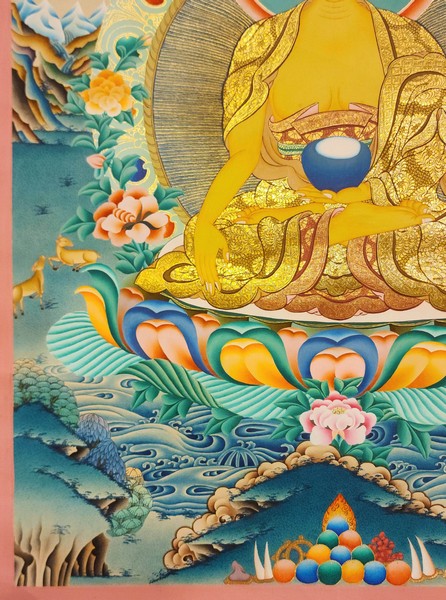

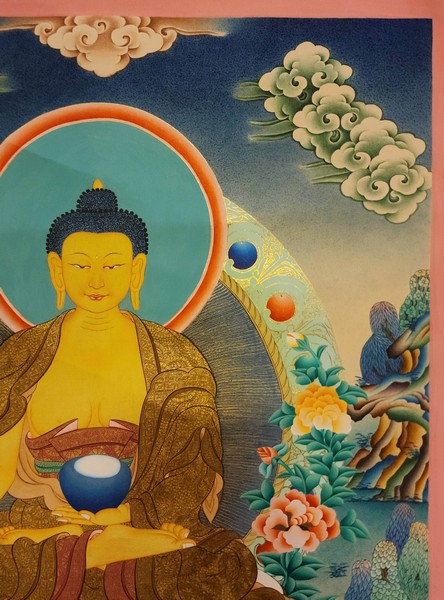
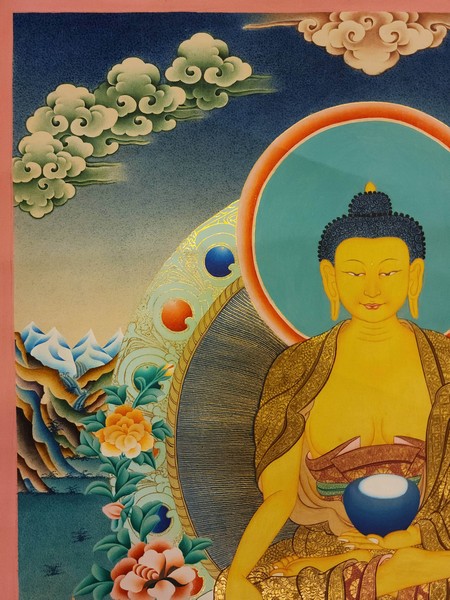
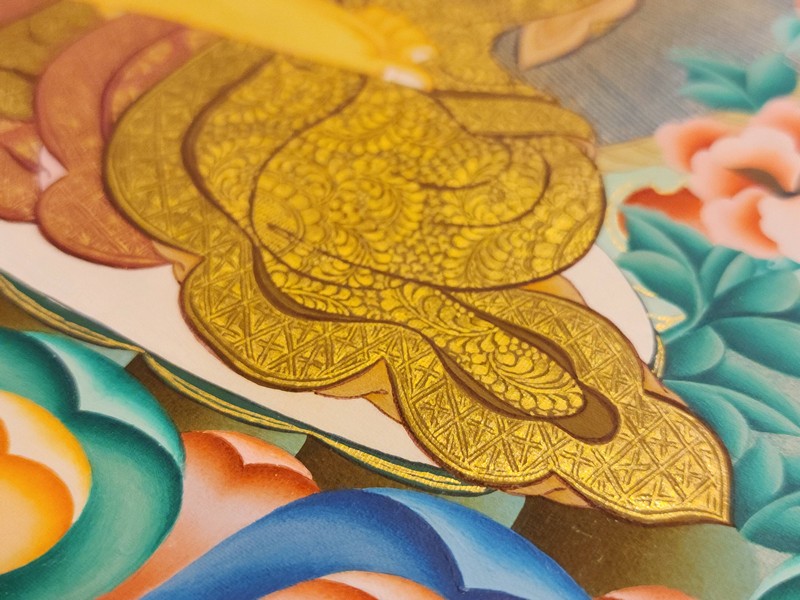
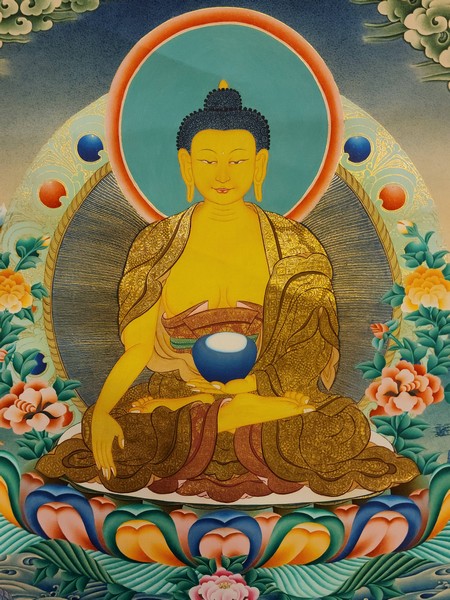
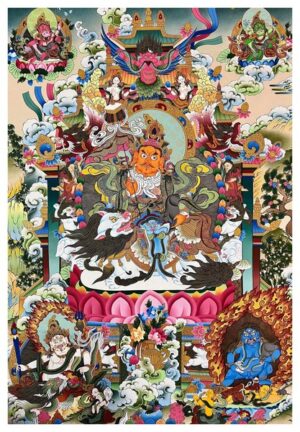
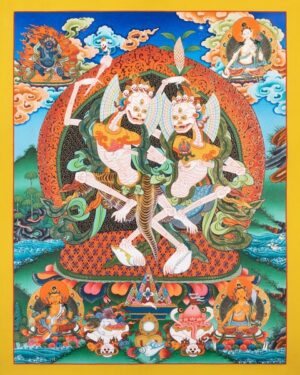


Reviews
There are no reviews yet.